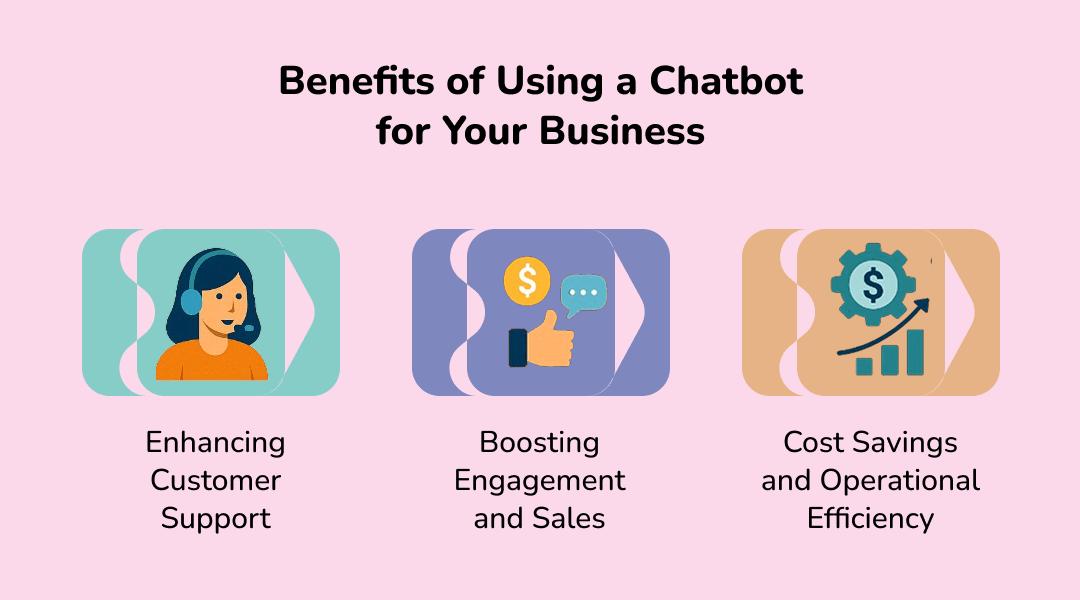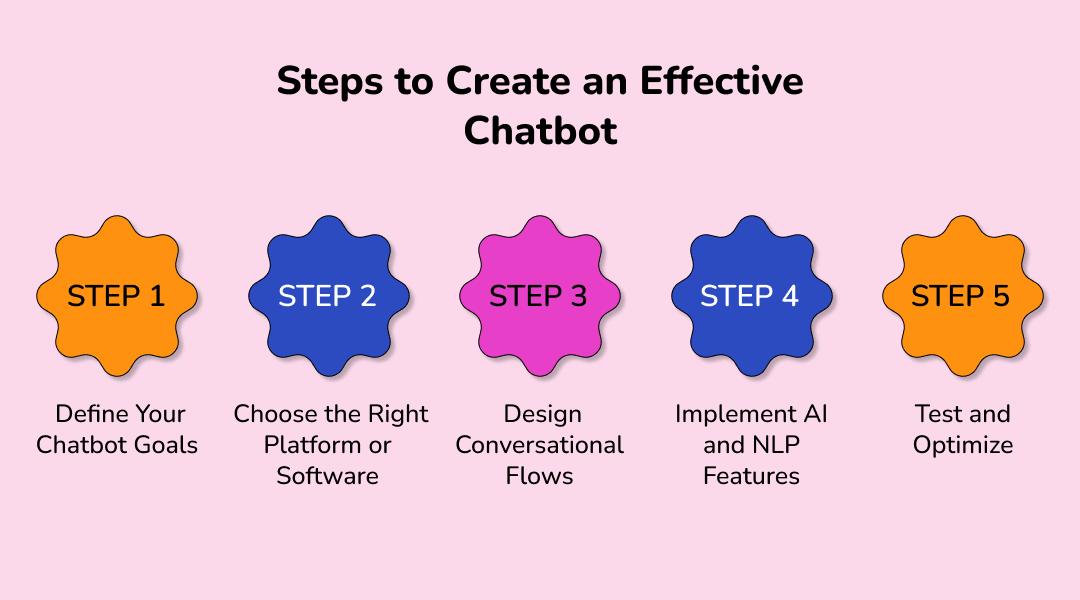How to Create an Effective Chatbot for Your Business
Let me guess. You’ve read about chatbots everywhere - on blogs, in webinars, even in that one LinkedIn post that promised your sales would triple overnight. And yet… every time you try, your chatbot either misunderstands your customers or sits there collecting digital dust.
I’ve seen it. Many businesses think a chatbot is a magic button. It’s not. The right bot can save hours, improve engagement, and even boost revenue. The wrong bot? It’s a tiny disaster.
In this guide, I’ll walk you through how to create an effective chatbot for your business, one that your customers actually enjoy interacting with, and one that delivers measurable results. We’ll cover everything: design, AI integration, testing, best practices, and future trends.
Benefits of Using a Chatbot for Your Business

Enhancing Customer Support
Customers want answers - fast. They don’t care about office hours or support tickets. A well-built AI chatbot for business provides instant responses to FAQs, guides users through processes, and even handles common complaints.
Imagine this: a customer visits your website at 11 PM, frustrated and ready to abandon their cart. Your chatbot jumps in. Answer their questions. Offers a discount. Problem solved. That's the real impact.
Boosting Engagement and Sales
Chatbots are not just about support—they’re sales tools too. A business chatbot can suggest products, remind customers of abandoned carts, and even upsell relevant services.
(Pro tip: your bot’s tone matters. A friendly, helpful personality keeps people engaged. Nothing kills a sale faster than robotic, generic responses.)
Cost Savings and Operational Efficiency
Here’s a blunt truth: every human agent you replace with an intelligent AI-powered chatbot frees up hundreds of hours per month. Fewer repetitive tasks, fewer mistakes, faster responses. That’s operational efficiency you can actually measure.
Types of Chatbots for Business
Rule-Based Chatbots
These are the “if-then” bots. They follow pre-set rules and scripts. Good for simple FAQs and structured tasks. But they fail when conversations get complex.
AI-Powered Chatbots
These bots learn from interactions. They understand natural language and can handle more unpredictable queries. Conversational AI for business falls here. They’re smarter, adaptable, and increasingly human-like.
Voice-Enabled Chatbots
Think Alexa or Google Assistant, but for your business. Voice-enabled chatbots let users interact hands-free, making them ideal for customer support hotlines, kiosks, or mobile apps.
Steps to Create an Effective Chatbot

1. Define Your Chatbot Goals
Start with questions:
What problems should it solve?
Which customers will it serve?
Do you want it to support, sell, or both?
Clarity here prevents wasted time and effort later.
2. Choose the Right Platform or Software
Not all chatbot software is created equal. You can go with a cloud solution, open-source frameworks, or hire a chatbot development company. I’ve seen businesses spend months on the wrong platform, don’t be that business.
3. Design Conversational Flows
Think like your user. Map every interaction. What if the user types gibberish? What if they abandon midway? Sketch scenarios. Use friendly, human-like language.
4. Implement AI and NLP Features
Here’s where the magic happens. AI chatbots for business can parse language, understand intent, and even predict what a user might need next. Integrate NLP (natural language processing) carefully too aggressive, and your bot will sound fake; too weak, and it misunderstands everything.
5. Test and Optimize
No bot should go live without testing. Real users will expose gaps your team never thought of. Collect data. Refine responses. Iterate. This is where chatbot development services really show their value.
Best Practices for Chatbot Design
Personalization and Tone of Voice
A chatbot should sound like it belongs to your brand. Personalization matters—address users by name, recall past interactions, and keep your tone consistent.
Clear CTAs and Guidance
Don’t leave users guessing. Guide them through actions with explicit calls-to-action. Want them to book a demo? Say it. Want them to subscribe? Make it clear.
Error Handling and Fallback Options
Bots will fail. Accept it. Provide fallback options like human handoff or alternative instructions. A good chatbot anticipates failure gracefully.
Integrating Your Chatbot with Business Systems
CRM Integration
Your chatbot should feed into your CRM, creating a seamless record of interactions. Imagine a sales rep getting the context before calling - magic.
Website and Social Media Integration
Bots should appear where your customers are: website, Facebook, WhatsApp, etc. Consistency across channels improves trust.
Analytics and Performance Tracking
Track engagement rates, conversation length, and resolution time. Data tells you what’s working and what’s broken. Ignore analytics at your own peril.
Common Challenges and How to Avoid Them
Poor User Experience
A bot that frustrates users does more harm than good. Test rigorously. Simplify language. Make responses helpful.
Overcomplicating Conversations
Stop trying to make your bot a genius. Complexity kills adoption. Stick to the most common tasks first, then scale.
Ignoring Feedback and Analytics
Users talk. Bots log. If you ignore both, you’ll never improve. Collect feedback. Review transcripts. Refine constantly.
Future of Chatbots in Business
The next decade will be all about hyper-personalized, predictive, multi-channel AI assistants. Businesses that integrate AI chatbots today gain not just efficiency, they gain insight into their customers’ minds.
Ask yourself: do you want to play catch-up later, or start building a bot that genuinely helps now?
Conclusion
Building an effective chatbot for your business isn’t magic, it's a method. Define goals. Choose wisely. Design thoughtfully. Test relentlessly. And never, ever ignore user feedback.
KriraAI has helped countless businesses implement AI chatbots that actually deliver value. If you want guidance from a team that understands the pitfalls and possibilities, consider us the best AI development company to bring your chatbot vision to life. You can also hire AI developers who specialize in conversational AI or explore our chatbot development company services for end-to-end solutions.
FAQs
Costs vary depending on complexity, platform, and integrations. Small bots can start at a few thousand dollars, while enterprise-level AI-powered chatbots may cost tens of thousands.
Not completely. They handle repetitive tasks efficiently but humans are still essential for nuanced, complex queries. The ideal approach is a hybrid model.
Most modern chatbots support API-based integration. Your developer can map conversation data into CRM fields to ensure seamless customer records and automated follow-ups.
Keep it simple, personalize interactions, anticipate user errors, use clear CTAs, and maintain a consistent tone of voice aligned with your brand.
Yes, especially if you want 24/7 support and better customer engagement. AI chatbots scale with your business and improve efficiency while freeing human resources.

CEO
